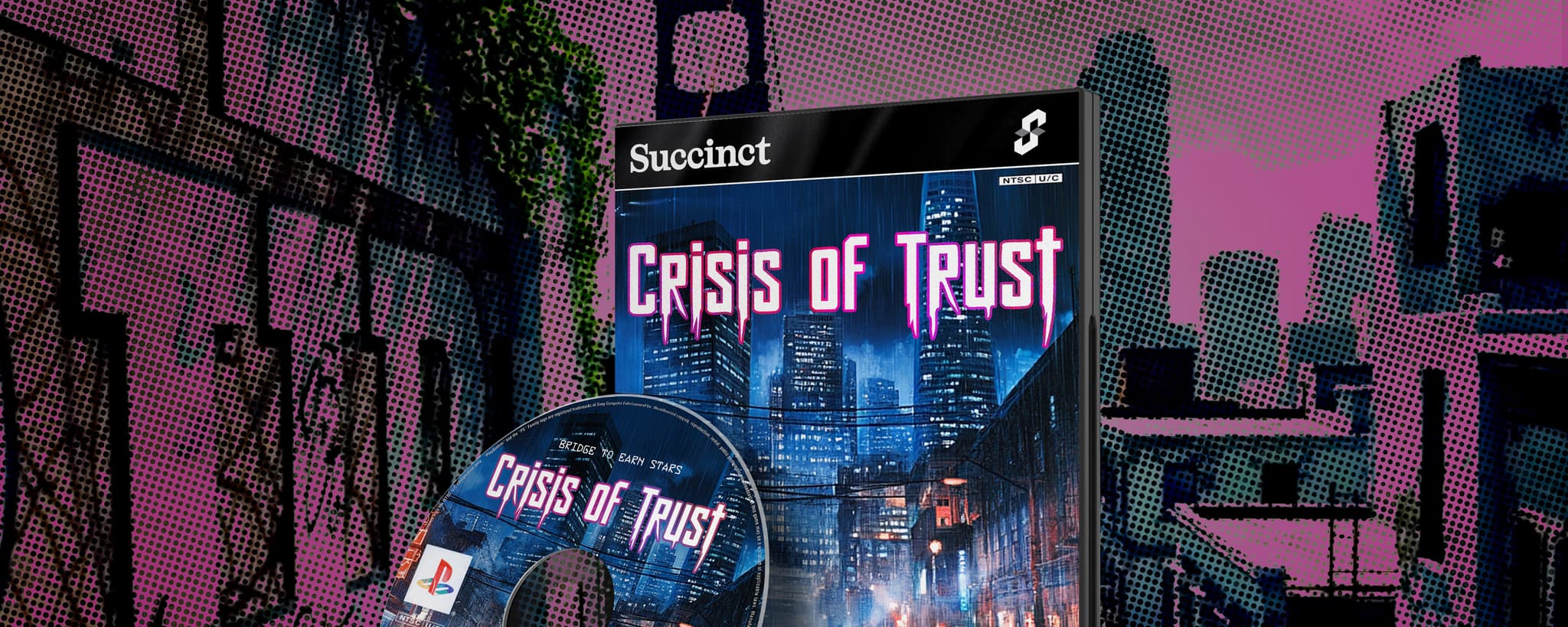A Crisis of Trust
by Kshitij Kulkarni
February 12th, 2025

Prelude. At Succinct, we believe that zero-knowledge proofs are a fundamental cryptographic primitive that will not only have broad implications for blockchains, but also for making the Internet verifiable. Blockchains have been early adopters of ZK technology, using proofs for scaling. Much has been written about this application, but there is an uncharted frontier that we are particularly excited about—how ZK proofs will change the Internet writ large over the next decade and provide refuge from the centralizing effects of AI to render the web user-verifiable, in areas from media to financial identity.
An Impending Crisis of Trust
The 2020s started off with a technological sonic boom. With the release of GPT-3 in 2020, the foundation model paradigm in AI emerged and the cost of generating content on the Internet has been dramatically falling since. Correspondingly, the digital world is becoming hard to trust. We are gated by centralized entities, guided by opaque algorithms, and hampered by censors. The individual faces a fundamentally unverifiable world.
we are breathing in the fumes of the worst information environment ive ever seen. the time between seeing a viral tweet and seeing it disproven is collapsing to zero
— roon (@tszzl) February 6, 2025
Already, LLM-powered bots have overrun X with realistic-looking text. We passed the Turing test and AI-generated images and video will soon become indistinguishable from reality. The largest social applications in the world, Facebook and TikTok, derive their value from centralized servers that are able to organize the world’s relationships; these relationships will be increasingly modulated by automated agents that act on our behalf.
Today, we face a choice: either centralize even further with AI or risk irrelevance. As the largest companies in the world gear up to spend hundreds of billions of dollars to train the next generation of foundation models and build the energy infrastructure required to power datacenters, it is difficult to see a path for anything but economies of scale. Correspondingly, people will face an online reality that resembles a simulacrum.
Some argue that there is no open source movement coming to save us from these forces: the winners in AI will be closed source because exponential data and compute mean that winning entails scaling. Others claim that even this is not going far enough. Soon, AI will become a national security issue of grave proportions and there will be no choice but to nationalize research labs and direct them towards protecting countries from their peer adversaries. There will be no such thing as a private AI company that actually succeeds; existing power structures will be reinforced.
What are freedom-minded individuals to do? Sitting idly by is not an option, but neither is engaging in utopic open source fantasies. Believing that the infinite benevolence of the universe will save us from the very real economic incentives at work is a surefire way to get steamrolled. The individual seems stuck between relegating her agency to centralized decision-makers and AI-generated content or checking out entirely.
Zero Knowledge Proofs Chart A Path
Zero-knowledge proofs offer hope—they can allow users to verify truth without re-executing a computation themselves. With ZK, individuals can receive guarantees from strong computers that interface with each other by off-loading the execution of programs. Perhaps we can hope for the best of both worlds: AI scales up and users retain their agency and the ability to monitor the world around them by consuming ZK proofs.

What does rebuilding our digital infrastructure with the verifiability of ZK look like? We take a closer look at four important areas: verifiable media, verifiable hardware, attestations, and financial identity. The guarantees provided by ZK can enable these verticals to become robust against generated content and the centralizing forces of AI, and allow us to chart a middle path.
Verifiable Media
Checking the veracity of media on the Internet is becoming increasingly difficult. AI makes it trivial to generate arbitrarily large numbers of fake images or videos. With ZK, we can build attested image-editing software that ensures all media on the Internet comes with guarantees of its provenance. Social apps can tag media with proofs that contain additional metadata about the image, such as the date and time it was created, the camera it was taken with, and the location it was taken in.
We can provide users details about the origin of media and whether or not it has been modified. Each edit or transformation to the image can be logged and pushed as a proof to a public blockchain, allowing viewers to verify the full history of modifications. News outlets can read these proofs while reporting. This creates an end-to-end verifiable pipeline from content creation to consumption.
Verifiable Hardware
Hardware such as cameras, microphones, and scientific equipment can use ZK proofs to ensure tamper-resistance. Proofs can demonstrate that sensor readings are authentic and haven't been manipulated. The hardware can attest to its own integrity, proving it's running authorized firmware and hasn't been physically compromised.
For scientific instruments, this creates verifiable chains of evidence for experimental results. Medical devices can prove they're properly calibrated and operating within safe parameters. Industrial sensors can demonstrate compliance with safety and quality standards while protecting proprietary data. ZK opens up a new design space in how we interface with the devices around us.
Trustless Attestations with ZK
We can have trustless attestation protocols that allow applications to provide guarantees to their users directly, without going through centralized servers. These protocols enable verification of software behavior, hardware state, and data integrity. Applications can prove they're executing exactly as specified, without hidden functionality or backdoors. TikTok has already been experimentingwith a trustless attestation protocol to prove the app is running on an untampered environment. In this protocol, instead of having to trust the TikTok servers, users can just verify the ZK proof themselves.
Users can verify security properties like end-to-end encryption, data deletion, and access controls without trusting the service provider. Protocols can support selective disclosure, allowing applications to prove compliance with rules or standards without revealing sensitive internal details.
Protecting Financial Identity
Data breaches have been a standard feature of critical financial infrastructure over the last several years. Prominent credit scoring companies like Experian have experienced hacks, leaking the sensitive information of hundreds of millions of users. With ZK, we can build credit protocols that can prove they follow fair lending practices without revealing proprietary models or sensitive user information.
Banks can demonstrate regulatory compliance without exposing customer data. Audit trails become cryptographically verifiable while protecting business confidentiality. Insurance companies can prove that they are running risk models correctly. This enables a more transparent financial system while maintaining confidentiality.
The Verifiable Future
In all these areas and more, ZK proofs offer a layer of truth that will allow the future to become default high-trust, paradoxically by removing the need for trust. With ZK, businesses can generate proofs and users can verify them locally. Instead of having to remain in a state of limbo about the truthfulness of text and the reality of images around them, users can view the world with a peace of mind.
We believe that ZK is fundamental to realizing this future. As the AI race ratchets up, ZK is key to resolving the crisis of trust we face today. The technology has already proven essential to blockchains. The verifiable future beyond awaits.
